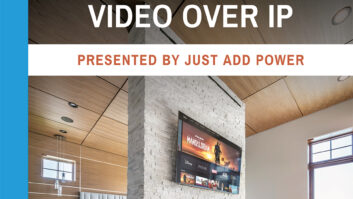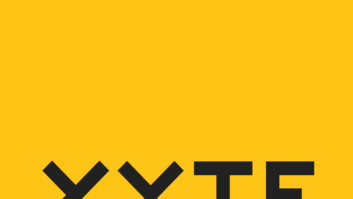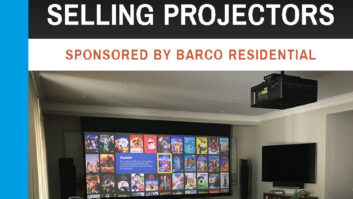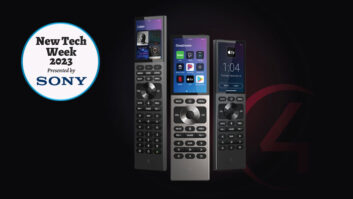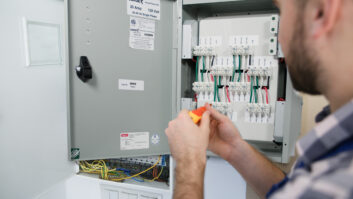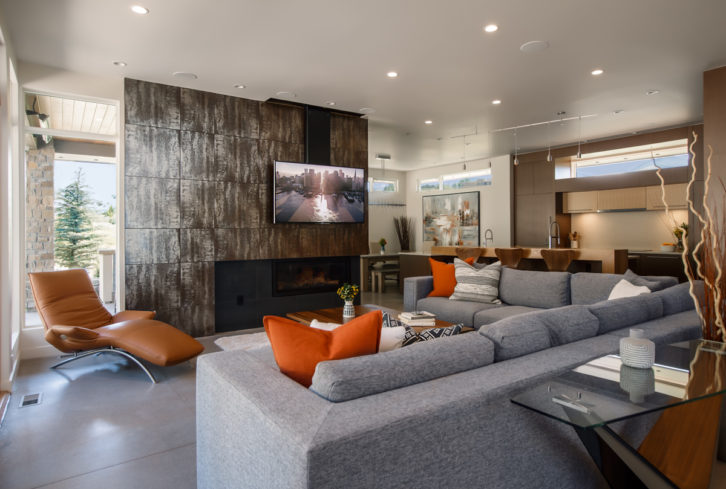
You can still rock it, even when you don’t roll it.
Remote monitoring has always been an important AV feature, and has become even more vital in these times of quarantine where rolling a truck can often be avoided. Savvy integrators know how to use remote monitoring to their advantage, keeping customers safe and satisfied, and enhancing profitability.
“Utilization of our remote tools such as SnapAV’s OvrC and OvrC Home have helped us navigate the many challenges of Covid in a significant way, as a designated essential service provider,” says George Harrison, Harrison Home Systems. “Our remote diagnostics systems provide our clients with the benefit of rebooting devices on their own when experiencing a problem, without having to have a technician enter the home.”
If that initial self-help approach does not work, Harrison has 24/7/365 proactive and reactive monitoring service plans that help provide the outstanding service that clients have come to expect. “We strive to help resolve issues before our clients even know there is a problem to begin with,” he adds. “We also have focused more closely on well-thought-out reboot scheduling setups for our equipment to keep things running smoothly.”
Residential Systems is now on LinkedIn! Click here to follow us for business and technology insights!
Harrison’s support capabilities have been enhanced by its partnership with Parasol. “With OvrC implemented, our internal team, as well as Parasol’s remote team, both have the same remote visibility to our systems and have the ability to see anything on the network that falls offline, or that comes back online, to help with further troubleshooting for our clients,” he says. “We still have internal, on-call staff available to answer the phone seven days a week as well.”
With or without a pandemic, remote monitoring has always been a consideration in his projects, says Wayne Flittner, Thousand Oaks Home Theater. “I use RTI’s RTiQ Intelligent Remote Monitoring System to monitor devices on the network that need to communicate with the control processor. Sometimes, when there is a power outage, devices come back online in random order, and this may cause some errors with devices that need a link with the processor via IP.”
The cloud-based RTiQ can be configured to monitor the RTI control ecosystem and components controlled by an RTI XP control processor. Dealers can monitor the status of these devices via a dashboard from anywhere in the world and receive email and text notifications that alert them if a failure occurs. Once alerted, the dashboard helps them identify the cause of the issue and allows custom actions to be triggered to restore the failed system or component. Customizable actions include anything the control system is capable of, whether it’s rebooting devices, running macros, or sending commands. RTiQ is easily configured using RTI’s Integration Designer APEX programming software.
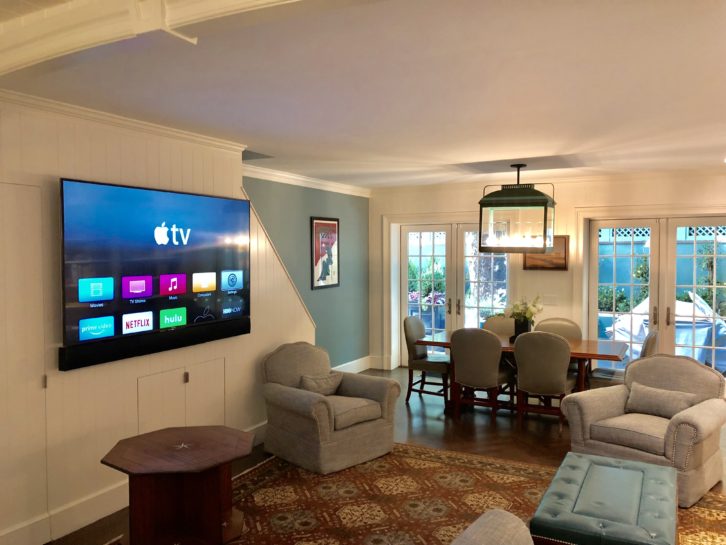
“We have always strongly suggested to our clients that they go with our remote service/monitoring and maintenance plans,” says Joe Mattera, Mattera Design, an RTI dealer. “With the pandemic, it’s almost a no brainer for new prospective clients. We’re also seeing some old clients inquiring about it, even when they originally did not think a remote plan was necessary. We make sure every RTI processor is on RTiQ. And we set up certain macros to reboot specific equipment in case of equipment lockups and power outages, etc.”
Tell It to the Clients
Mattera advises to keep it simple when explaining remote monitoring’s advantages to clients. “Key points are that it saves them money,” he says. “And by having a remote monitoring system we can simply log in remotely and see if there are any obvious issues that may be solved with a simple reboot of equipment. If they don’t have one of our remote plans, truck rolls and service calls can add up quickly for something that simply needed a reboot or firmware update.”
The great thing about remote monitoring is that an issue may be noticed before a client sees it, and can be corrected without the client ever knowing about it, he adds. “Remote monitoring is a great recurring revenue service option; it helps our bottom line during the slower times of business.”
It can also be a missed opportunity, Flittner says, calling for a robust strategy and recurring maintenance plans. “Our approach is to present remote monitoring as a great benefit to our customers,” he says. “Often, for issues with cable boxes, Apple TVs, or Roku players, all that is required is a simple reboot. By being able to regularly monitor our clients’ systems and get notifications on device failures, we’re able to quickly resolve issues that may eliminate a phone call from the client and a truck roll.”
Harrison emphasizes to clients that they will be able to reach out at all times throughout the year, day or night, if and when they have problems or questions. “Our clients have given us nothing but genuinely positive and appreciative feedback regarding our remote service capabilities — especially now, when they are so sensitive about having technicians enter the home.”
Demonstrating their own capabilities, and comparing them to less sophisticated competitors who lack robust, proactive programs, works to their advantage, he adds. “We have implemented a training program for our technicians so they can utilize these tools in the best possible manner, creating best practices protocols and procedures,” says Harrison.
Related: Rapid Improvement Plan – Recurring Monthly Revenue Attachment
Harrison has been using SnapAV’s OvrC software and Wattbox hardware since its inception several years ago. “It’s a great tool and interface that allows our technicians not only to get first-hand knowledge from the client, but to have a deeper understanding of problems remotely, all because of its robust monitoring capabilities,” he says. “This allows us to reboot problem devices, set schedules to automate the reboots, and make configuration changes on the fly per client request. This has helped us, at a minimum, put a band-aid on a situation until we can get onsite and further troubleshoot or replace equipment. SnapAV’s OvrC has revolutionized our service department.”

